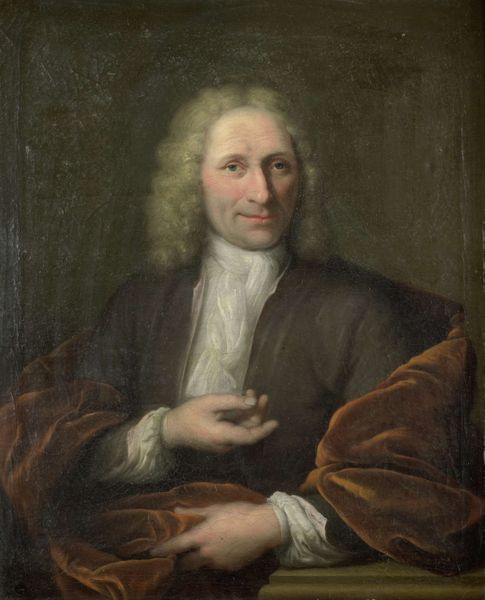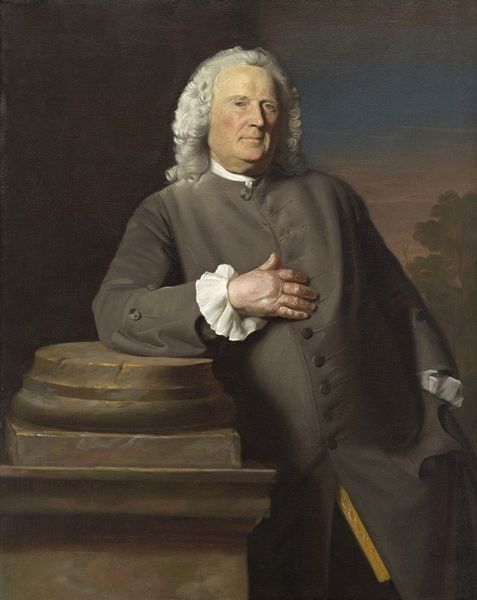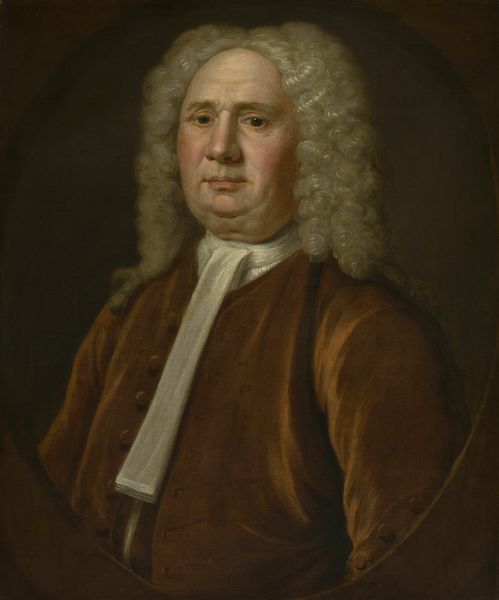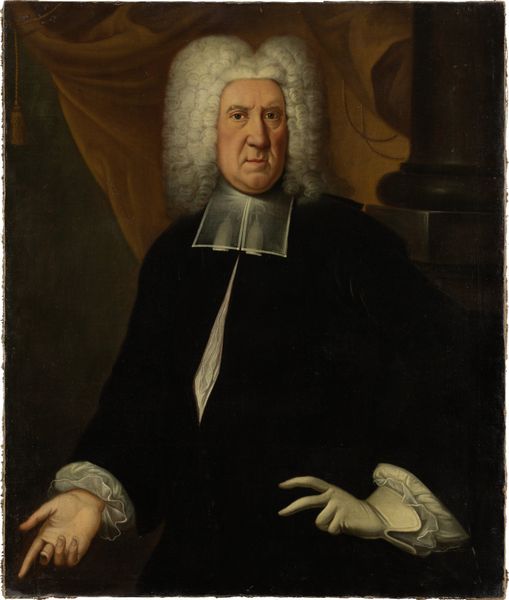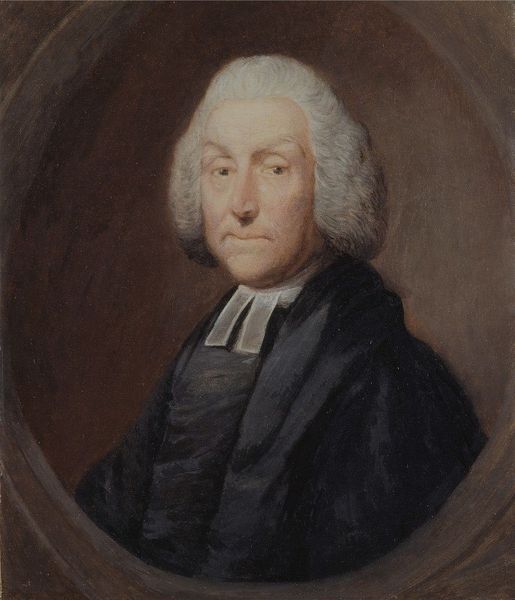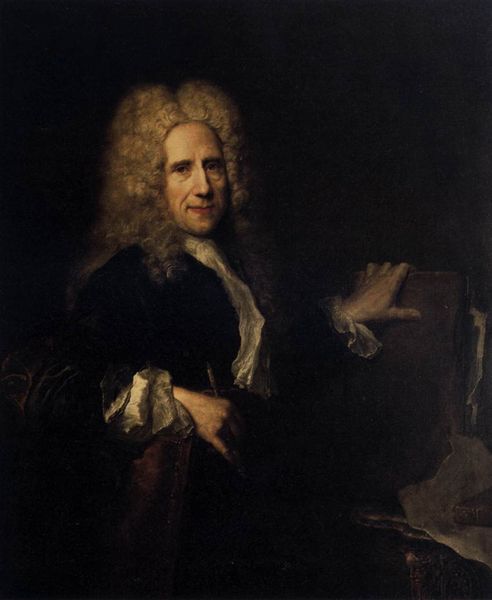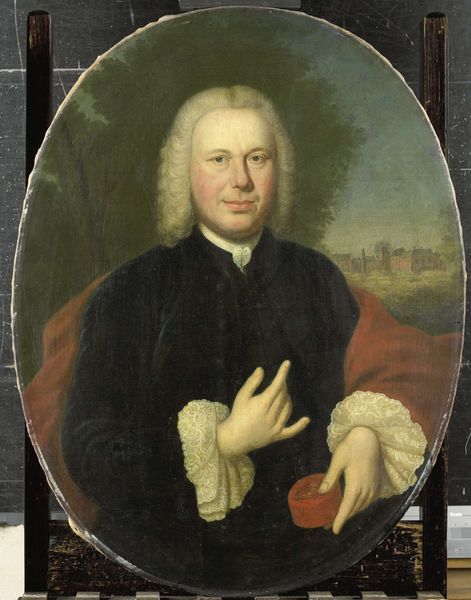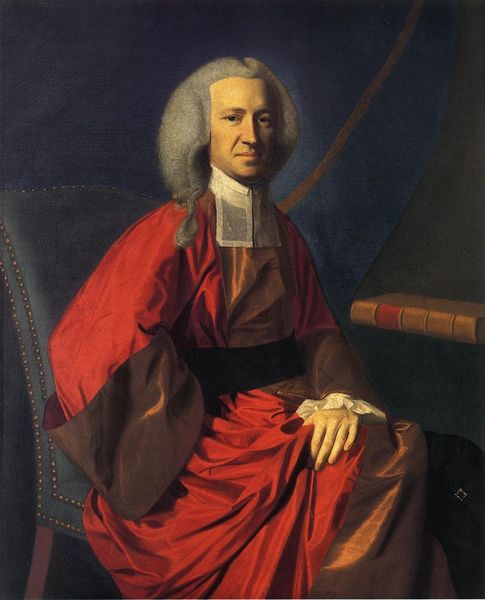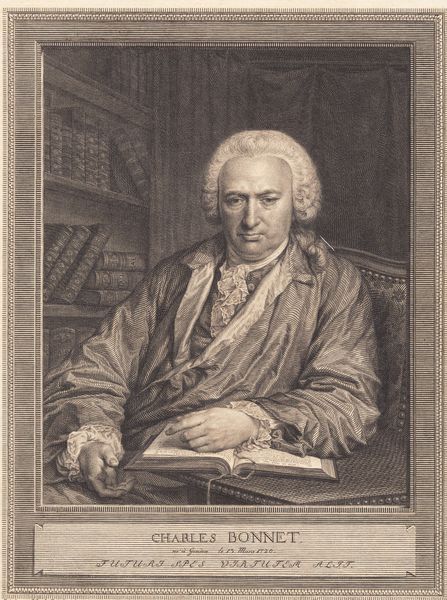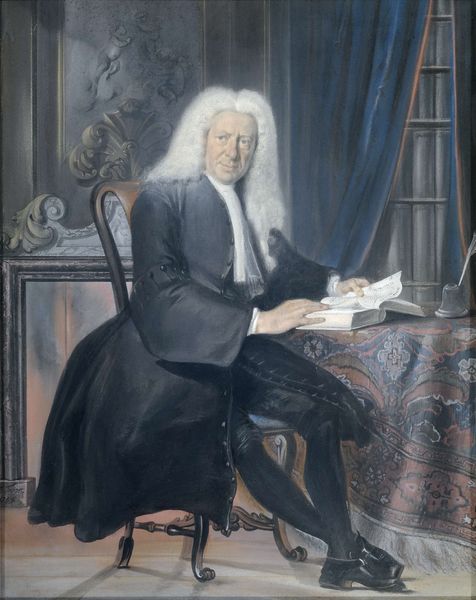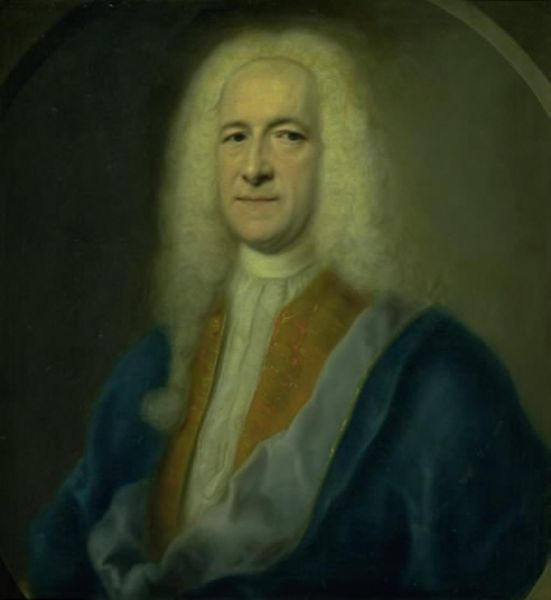
Portrait of Jan van Lennep the Elder (1634-1711). Amsterdam Merchant in Silk, Gold and Silver Cloth and Art Collector c. 1700
0:00
0:00
oil-paint
#
portrait
#
baroque
#
oil-paint
#
genre-painting
Dimensions: height 111.5 cm, width 90 cm, depth 16.5 cm
Copyright: Rijks Museum: Open Domain
Curator: This intriguing portrait is identified as "Portrait of Jan van Lennep the Elder (1634-1711). Amsterdam Merchant in Silk, Gold and Silver Cloth and Art Collector," dating from around 1700. Editor: It's a surprisingly intimate portrait. The muted palette of oils against such dark background lends a serious, thoughtful air. The man's expression and the loose brushstrokes really grab my attention. Curator: Indeed. Consider how portraits like this were often commissioned. Van Lennep, a merchant dealing in luxury materials, likely saw this portrait as a demonstration of his status within Amsterdam society. Editor: And how does that wealth translate into the visual language of the work itself? Look at the luminosity the artist achieves on the man's white collar and his hands – indications of refinement and non-manual labor. Even the paper he holds points towards trade, correspondence, perhaps? Curator: Precisely. The crafting of the textiles he traded directly contrasts with the creation of the painting itself. The anonymous artist expertly used their materials to communicate a certain image of success and the societal structures that fostered such commerce. It highlights the value placed upon artistic and mercantile skill. Editor: So, it is as much a display of painting mastery as it is an advertisement of Jan van Lennep’s position? The somber background makes everything else stand out even more, almost theatrically spotlighting the wealth and position in society, carefully manufactured. Curator: I find it very revealing that, though his name and profession are memorialized, we don't even know the name of the individual who labored to create this image of him. Who benefitted most from the making of this piece and how are we meant to perceive that relationship now? Editor: It really underscores the artist's role in visually constructing identity and status within that society, almost like a public relations exercise from three centuries ago. Curator: Definitely gives one a different perspective, considering who controls visibility, both then and now. Editor: It makes me think about all the people behind the scenes, all the labour—visible and invisible—that goes into these images and the systems they supported.
Comments
No comments
Be the first to comment and join the conversation on the ultimate creative platform.
